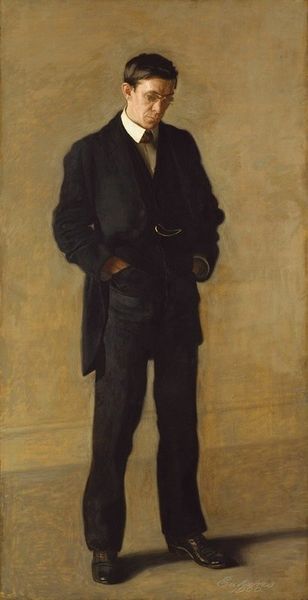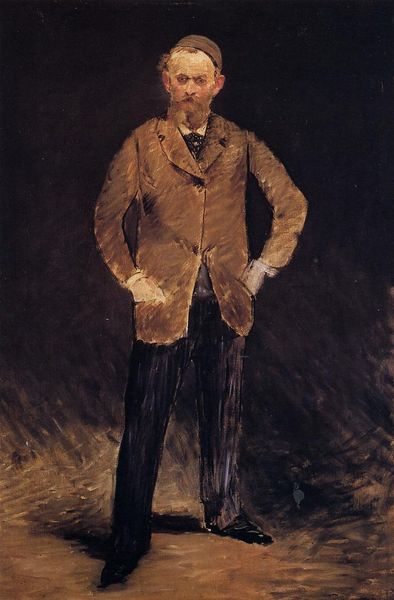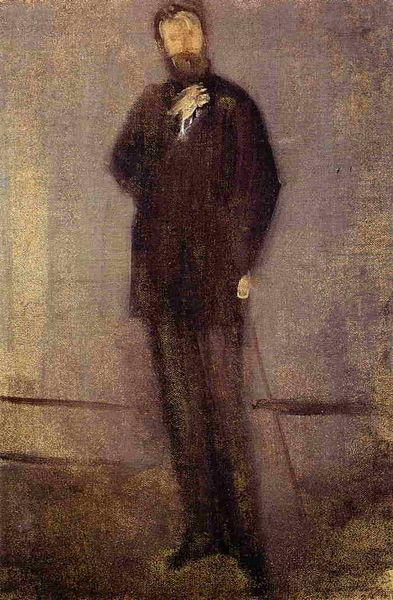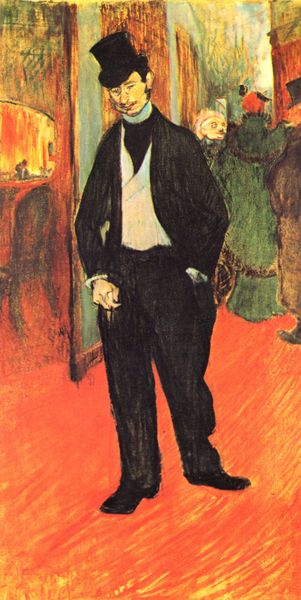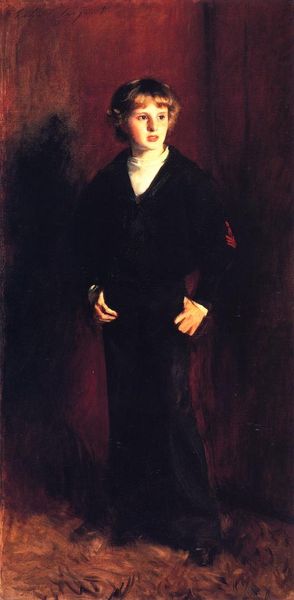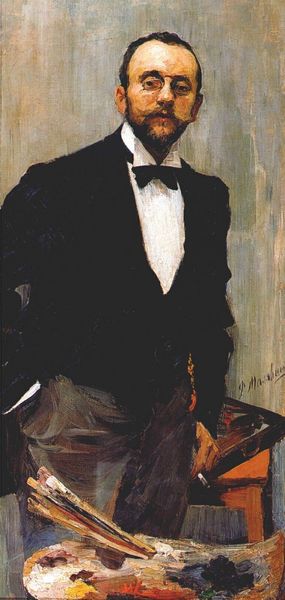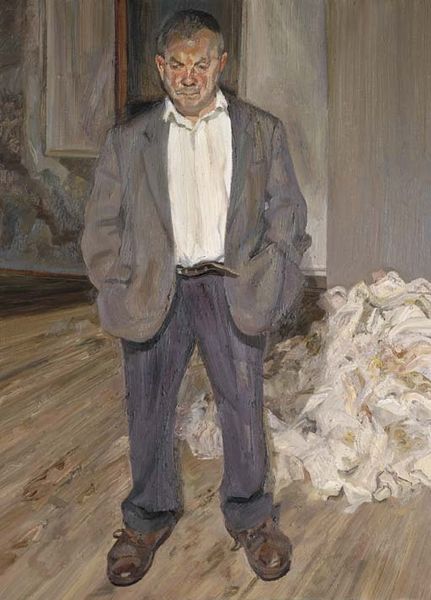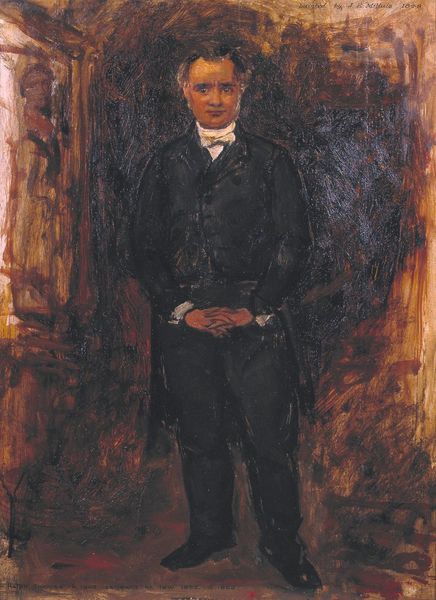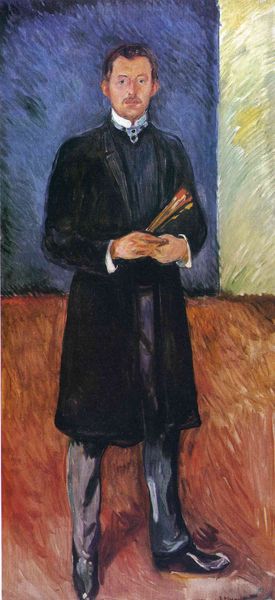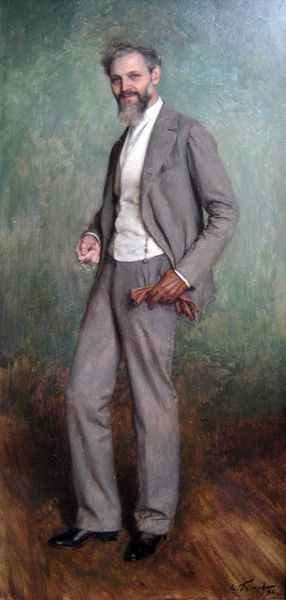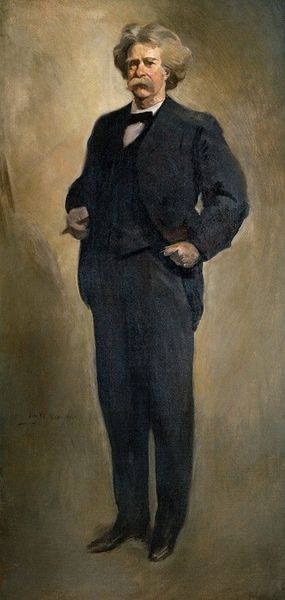
Dimensions: 190 x 100 cm
Copyright: Public domain
Curator: Standing before us is Edvard Munch's "Portrait of the Painter Jensen Hjell," a striking oil on canvas completed in 1885. It hangs here in the National Gallery in Oslo. Editor: The immediate impression? Well, there’s a lovely sort of… seriousness to him. Almost weary. The palette is dark, chocolatey. It gives me the feeling of a storm brewing just beneath the surface. Curator: Indeed. Munch painted this relatively early in his career, and while we see glimpses of the expressionistic style he'd become famous for, there are also strong influences of realism and perhaps a touch of Romanticism. He captures Hjell as a very distinguished but burdened man. Consider how the institution of art shapes who gets to be represented. What narratives were these portraits perpetuating? Editor: It's almost as if he’s weighed down, you know? By the gravity of being an artist in a world that...well, that may not always understand him. I imagine Hjell pondering: what does it mean to dedicate your life to such an isolating pursuit? You almost feel Munch channeling that doubt through the very brushstrokes. Curator: Absolutely. And Munch’s relationship to the established art scene of his time was always complicated, oscillating between wanting acceptance and forging his own radically individual path. This painting serves as a reminder of those artistic debates around academic traditions and experimentation in Oslo during the late 19th century. Did these portrayals, like the painter Hjell himself, represent the evolving cultural identity of Norway at that time? Editor: And you can see him grappling with it right there in that slightly… smudged, almost impatient style of painting. Like, he wanted to get *something* down, but exactly *what*, that’s the delicious, uneasy question lingering behind those piercing eyes. It reminds me that all artists go through their own journeys with influence and inspiration, eventually breaking into what sets their works apart. It's a powerful thing. Curator: A potent reminder of the tensions within the artistic soul, and the wider forces shaping that very expression. Editor: Yes, perhaps the man himself doesn't reflect modern standards, it can be thought-provoking, a conversation on what art truly evokes to a viewer from so long ago.
Comments
No comments
Be the first to comment and join the conversation on the ultimate creative platform.
